| Umělec magazine 2004/4 >> Welcome to the free world | List of all editions. | ||||||||||||
|
|||||||||||||
Welcome to the free worldUmělec magazine 2004/401.04.2004 Lizzy Le Quesne | info | en cs |
|||||||||||||
|
“Welcome to the free world!” - productive squabbling at Authentic Structures – symposium and discussion platform, Prague December 2004.
The colourful squabbling at this event was productive in the sense that very different voices were heard and intensely complex issues - of a workable infrastructure for fine art in any case, and in a post Communist world in particular - were extrapolated. The opinions, approaches, needs and histories expressed by various artistic communities across the former Communist block in Central and Eastern Europe were profoundly diverse and pinpointed essential difficulties with the concept of Eastern European art, with the reintegration of the former Communist world into ‘Western’ style contemporary society as well as broader philosophical questions about the role and value of art. The symposium was organised partially on the back of the publication of the book Primary Documents: a sourcebook for Central and Eastern European art since the 1950’s, produced by MOMA NY to introduce English-speaking readers to important developments in art within the former Communist block. Four days of panel presentations by artists, curators and critics from across Central/Eastern European region as well as some representatives from the US, France and Holland, were followed by two days of Prague gallery presentations and studio visits. Despite clearly stated aims the topics of real interest to participants soon appeared as did several deep rifts between approaches. ‘EEA’ - Eastern European Art - a useful concept? Many pointed out the very little communication and mutual interest between Eastern European countries pre 1989, and the vast cultural and ethnic differences within them, making a blanket definition of art from the region a nonsense. Excellent presentations on Polish abstract art, Hungarian experimental film making in BBS the Béla Balázs studio, Croatian conceptualist Trbuljak, Slovak mystic Stano Filko and many others affirmed both the profound diversity and the strength of art from all across the region even under Communism. Good art was made under these conditions. What was missing was an infrastucture around it of exhibition, criticism and art market. Symposium organiser Vít Havránek stated that he used the term Eastern European art only in a geographical sense. Others saw it as a real definition. Slovenian group of artist/activists Irwin defined ‘Eastern European art’ as a legitimate concept arguing that work made under Communism, or in post-Communist conditions is by definition different from ‘Western art’. Conditions of creation rather than product defines the art. This claim, on which they have built their careers, however was ill-informed and naively argued, tending to idolise conditions elsewhere and romanticise their woes. A cleverer slant on the same approach came from Slovenian curator Zdenka Badovinac who has humorously characterised the negative aspects of post-Communist life in her group show based on the 7 deadly sins of Eastern Europe: masochism, cynicisism, laziness, …………….. (I HAVE EMAILED VIT HAVRANEK TO SEE IF HE CAN CONTACT BADINOVAC TO COMPLETE THIS LIST) Art Market – friend or foe? Some saw the development of a capitalist ‘art market’ as the main aim for East Europe – to develop a culture of collectors and collecting museums. Many complained that Western collections and institutions do not buy enough art works from post Communist regions, and when they do, not at high enough prices. Camille Morineau of the Georges Pompidou Centre however, explained that buying art for major institutions is not a matter of personal taste or bias but involves persuading large numbers of people of the importance and value of a work in question, which, essentially, involves information – about the artists and the context of the work. The East then would do better to collate and present information about their artists (as in the book Primary Documents), than to hope for a hotly contested free market system to uncover them. Vít Havránek pointed out that prices are naturally a result of the local market in which a product is created. They are also directly related to the competing interest for a product. Is the post-Communist world arguing to be treated as a charity case in the trade of art works? Sofia based curator Iara Boubnova spoke of the concept of “cultural branding” to sell the work of East Europe abroad. This is both a defeatist and potentially dangerously anti-creative approach. She admits that “we are playing somebody else’s (the West’s) game” and seems to propose aping a system she disapproves of. This approach can only lead to resentment and threaten the authenticity of the artistic impulse. Several argued that a private art market in fact does little for the advancement of contemporary art. Rumanian artist Dan Peřowski said: “There is an art market in the East. The state buys, the ex Communists buy and the new rich buy. But they buy the same old sculptures”. Polish artist Jaroslav Kozlowski added “There is a myth in Eastern Europe that an art market can make art better. The idea of a market economy is a kind of ideology. We know how Communist ideology corrupted a lot of artists, the market can do the same.” Dutch based Slovak curator Mária Hlavajová contributed… “In Holland it is often said that the art market spoils the quality of the art. We don’t want an art market as such…what we want is real interest!” Furthermore the traditional art market is a concept rapidly becoming outdated and this is something Eastern Europe must address in its establishment of a contemporary art infrastructure. It would be wrong to idolise and aim to imitate a model which is already losing its central position. Hedwig Saxenhuber, editor of Springerin magazine stated simply “The art market is boring. I hope that is not the way the East will go!”. The focus on objects, buyable objects, is naturally dissolving. As art becomes more and more about performance, event, intervention, installation, situation, moving image and experiential case it becomes less saleable in the traditional sense. It cannot be collected and stuck on a wall or plinth. The whole notion of man as independent observer of external world has undergone a philosophical shift and art reflects this. Degot was effectual: “We cannot escape the idea of an art market altogether. This is Utopian. The art market has a valuable role to play in generating interest in the field but an artist’s activities need to be valued and disseminated differently. Rather than sell items we can pay the artist a fee. We can foster not a market of things but a market of distribution of things. We can pitch contemporary curatorial practice against the market, create a market of a different type.” Speak of the third territory led to the concept of public money. A representative of Erste bank and a sponsor of the symposium dropped in a prevailing notion of contemporary Europe, of well distributed public and private funds for the arts, organised, crucially, on a European level. Perhaps as the world becomes more genuinely global and communication easier, such another attempt at centralisation gains new credibility? Socialist Realism = Capitalist Mass Culture Ekaterina Degot drew a fascinating comparison between Soviet style Socialist Realism and the images of mass culture imposed upon the modern world. The parallel is obvious in the promotion of the ideal family unit, a prescribed lifestyle and homogenous aesthetic values. “Only contemporary mass culture is more dangerous…” she said “…nobody believed what the Soviets told us but people do not question and actually aspire to the lifestyle presented by mass culture now”. It is profoundly anti-creativity and our society and our families are a part of it in a very pervasive way. Several symposium members attested to a certain freedom of thinking that came with total rejection of the prevailing Communist ideology. “Now we have to develop mechanisms against the mass culture which is coming to our region” said Degot. “There was a funny book in Russia about coping under Communism called How Not to Work. The practical conditions are now very similar and this can be re-applied!” Welcome to the free world! “We are playing the West’s game more and more. You have to meet deadlines, to be very professional now, we can’t have the period for wasting time that contributes to the small things. ” Iara Boubnova complained in the final discussion. This no doubt is true. Welcome to the free world. Naïve resentment and oversimplification of the perceived advantages of the Western art world over the post-Communist East surfaced early. Irwin were the self appointed front line fighting the cause of the oppressed and neglected East, with banal such comments as “People in the West walk straight out of art school, cross the road and into the profession”. Some people complained that artists were not supported under Communism, that they had to live on very little money, could not sell their work, even - horror of horrors - were forced to do other work! Many pointed out the nonsense in this argument. Artists in the West do other jobs, all the time, to survive, and also to pay for their creative work. Some receive grants from the government, but these rarely cover the costs of a specific project and never support a career. Trained and working artists in the West often do not dare label themselves this way, such is the precariousness and obscurity of the profession. Even under the constraints of Communism an artist was a significant, even feared, member of society. Their voice was recognised to the extent that it was censored. The uninformed and partisan wingeing from some post-Communist artists and curators met with appropriate disapproval from those with live links to Western artists. Hungarian artist Miklós Erhardt: “In London and Berlin I could almost touch the despair I felt there – artists in the West have a really difficult life. I have a feeling of importance about what I do. Dominic (Erhardt’s Scottish collaborator) doesn’t. My culture gives much more normality to artists as participants in society, and an appreciation of your role in society.” Mária Hlavajová was more constructive: “One thing is very clear, that we mustn’t maintain our status of victim, which only allows the West to continue as the main power. We have a responsibility to reconstitute ourselves as former West.” Hlavajová talked in terms of Europe rather than Eastern Europe and in the value of art as a self reflective process which she enables through organising themed group exhibitions focussed on examination of our changing world, and looking at the context of our lives. Degot represented a forward thinking Russia, where a focus on the value of artistic process and thinking be emphasised, in new kinds of infrastructure. “Russians have a great advantage because they have a history of the performative and process based work which is now a very contemporary development. But they don’t realise it.” Miklós Erhardt said simply that “Eastern European history can be useful. Capitalist codes that are deeply entrenched in the West were broken by Communism. The desperation and the codelessness of the post Communist condition has a real potential, in a world that is changing very fast. Exploring, explaining, using this can lead to helpful new developments”. East-West debate….Too little? Too late? Definitely not. Fundamental misunderstandings were aired, and the complexity of the issues at hand came out. Eastern Europe is a geographical region containing countries with diverse cultures which have both advantages and disadvantages in the modern world. Art in the new Europe still undisputedly has its value and lots of people to fight energetically for it. There are evidently terribly naïve visions of what Westernisation can deliver, owes, to the East, largely propounded at the symposium by the older generation of male artists whose careers began as idealist dissidents under Communism. There is a fresher generation who view the West as partner not as parent and can see the relative advantages of their own lack of entrenched history in a capacity for creativity in new art infrastuctures. A practical symposium addressing this in terms of the shape of contemporary art is a second step. The prevailing truth gained in Prague this December was that perspectives are slanted and subjective, and that the new integrated Europe has a lot of reality to discover about itself, and a lot of myths to dispel. This was neatly exemplified by Dan Peřowski: “We used to be sick of 8 hours a day of Ceaucescu on the telly, now we have 80 channels and all of them are shit. We used to be annoyed and humiliated that we had to eat salami made from soya, now we hear that soya is very healthy and fashionable. We used to be disgusted that gypsies ate swan meat, now we know that in the UK only the royal family has the right to eat swan”.
01.04.2004
Recommended articles
|
|||||||||||||
|
04.02.2020 10:17
Letošní 50. ročník Art Basel přilákal celkem 93 000 návštěvníků a sběratelů z 80 zemí světa. 290 prémiových galerií představilo umělecká díla od počátku 20. století až po současnost. Hlavní sektor přehlídky, tradičně v prvním patře výstavního prostoru, představil 232 předních galerií z celého světa nabízející umění nejvyšší kvality. Veletrh ukázal vzestupný trend prodeje prostřednictvím galerií jak soukromým sbírkám, tak i institucím. Kromě hlavního veletrhu stály za návštěvu i ty přidružené: Volta, Liste a Photo Basel, k tomu doprovodné programy a výstavy v místních institucích, které kvalitou daleko přesahují hranice města tj. Kunsthalle Basel, Kunstmuseum, Tinguely muzeum nebo Fondation Beyeler.
|







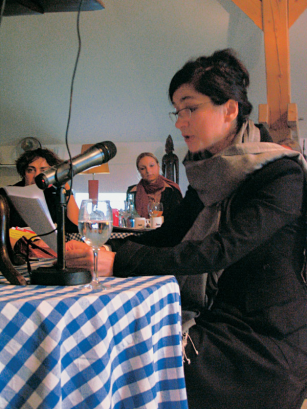















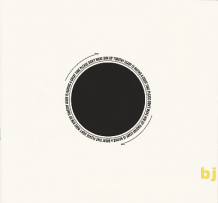





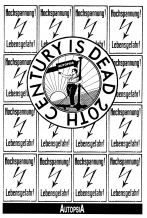
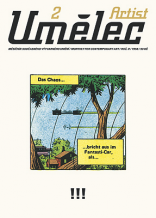
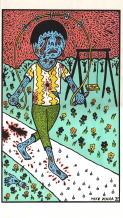


 New book by I.M.Jirous in English at our online bookshop.
New book by I.M.Jirous in English at our online bookshop.
Comments
There are currently no comments.Add new comment